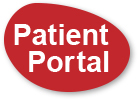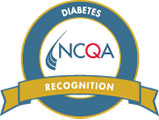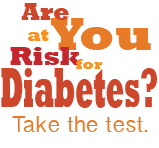Type 1 Diabetes
Type 1 Diabetes is an autoimmune disease where the body produces an antibody that destroys the cells that make insulin by turning on the immune system. Therefore, Type 1 Diabetes is characterized by a lack of hormone insulin which raises the glucose in your body. Glucose is a sugar that your body uses for instant energy, but in order for your body to use it properly, you have to have insulin to move it into cells so it can be transformed into energy for muscles or made into fat for energy storage. Having too much glucose in your body can cause serious complications or even death. In order to avoid serious complications, people with Type 1 Diabetes must take insulin to help their bodies use glucose effectively.
Type 1 diabetes used to be called juvenile diabetes because so many cases were noticed in patients were less than 20 years old. However, Type 1 Diabetes can happen at any age. Children and young people account for the majority of the Type 1 Diabetes. Here’s another reason “juvenile diabetes” isn’t exactly accurate anymore: type 1 diabetes isn’t the only type of diabetes that can affect children and young adults. Type 2 diabetes is becoming more prevalent in younger people, and the treatments and causes of Type 1 and Type 2 are very different. It can be misleading and confusing to talk about “juvenile diabetes” when there are two distinct types that can affect children and young adults.
You can handle the new world of Type 1 diabetes and the way to manage it is by replacing back insulin. Learn all you can about how best to manage day-to-day life and be proactive in taking care of your health.
Type 1 Diabetes Symptoms
Type 1 Diabetes develops gradually, but the symptoms may seem to come on suddenly. If you notice that you have several of the symptoms listed below, make an appointment to see the doctor.
Here’s why symptoms seem to develop suddenly; something triggers the development of Type 1 Diabetes, typically a viral infection plus a genetic predisposition of the immune system. Over time, the cells that make insulin (beta cells) are destroyed and there’s no more insulin in the body, blood glucose levels rise quickly, and these symptoms can rapidly develop:
• Extreme weakness and/or tiredness
• Extreme thirst – dehydration
• Increased urination
• Abdominal pain
• Nausea and/or vomiting
• Blurry vision
• Wounds that don’t heal well
• Irritability or quick mood changes
• Changes to (or loss of) menstruation
There are also signs of Type 1 Diabetes. Signs are different from symptoms in that they can be measured objectively; symptoms are experienced and reported by the patient. Signs of Type 1 Diabetes include;
• Weight loss – despite eating more
• Urine volume increasing – despite drinking a lot
• Rapid heart rate
• Reduced blood pressure (falling below 90/60)
• Low body temperature (below 97 degrees Fahrenheit)
There is an overall lack of public awareness of the signs and symptoms of Type 1 Diabetes. But there are people working to promote knowledge of Type 1 Diabetes. Making yourself aware of the signs and symptoms of Type 1 Diabetes is a great way to be proactive about your health and the health of your family members. If you notice any of these signs or symptoms, it is possible that you have Type 1 Diabetes. A doctor can make that diagnosis by checking blood glucose levels.
Type 1 Diabetes Causes
It isn’t entirely clear what triggers the development of Type 1 Diabetes. Researchers do know that genes play a role; there is an inherited susceptibility. However, something must set off the immune system, causing it to turn against itself and leading to the development of Type 1 Diabetes.
Genes Play a Role in Type 1 Diabetes
Some people cannot develop Type 1 Diabetes; that’s because they don’t have the genetic coding that researchers have linked to Type 1 Diabetes. Scientists have figured out that Type 1 Diabetes can develop in people who have a particular HLA complex. HLA stands for human leukocyte antigen, and antigens function is to trigger an immune response in the body. There are several HLA complexes that are associated with Type 1 Diabetes, and all of them are on chromosome 6. However, less than 10% of people with these HLA complexes develop Type 1 Diabetes. Different HLA complexes can lead to the development of other autoimmune disorders, such as rheumatoid arthritis, ankylosing spondylitis, or juvenile rheumatoid arthritis. Like those conditions, type 1 diabetes has to be triggered by something – usually a viral infection.
What Can Trigger Type 1 Diabetes?
Here’s the whole process of what happens with a viral infection: When a virus invades the body, the immune system starts to produce antibodies that fight infection. T cells are in charge of making the antibodies, and then they also help in fighting the virus. However, if the virus has some of the same protein as the beta cells or it infects the pancreas exposing the cells that make insulin in the pancreas – then the T cells can actually turn against the beta cells. The T cells make the antibodies which can destroy the beta cells, and once all the beta cells in your body have been destroyed, you can’t produce enough insulin. It takes a long time (usually several years) for the T cells to destroy the majority of the beta cells, but that original viral infection is what is thought to trigger the development of Type 1 Diabetes. Not every virus can trigger the T cells to turn against the beta cells. The virus must have proteins or antigens that are similar enough to the proteins in beta cells and those viruses include:
• B4 strain of the coxsackie B virus (which can cause a range of illnesses from gastrointestinal problems to myocarditis – inflammation of the muscle part of the heart)
• German measles
• Mumps
• Rotavirus (which generally causes diarrhea)
Researchers have made significant progress in understanding the cause of Type 1 Diabetes, and they are still hard at work to figure out why certain viruses trigger it and why T cells turn against beta cells. The medical community wants to better understand the causes of diabetes in order to prevent it.
Other Risk Factors for Type 1 Diabetes
Race/Ethnicity
Certain ethnicities have a higher rate of Type 1 Diabetes. In the United States, Caucasians seem to be more susceptible to Type 1 than African-Americans and Hispanic-Americans. Chinese people have a lower risk of developing Type 1, as do people in South America.
Geography
It seems that people who live in northern climates are at a higher risk for developing Type 1 Diabetes. It has been suggested that people who live in northern countries are indoors more (especially in the winter), and probably means that they are in closer proximity to each other - potentially leading to more viral infections.
Conversely, people who live in southern climates – such as South America – are less likely to develop Type 1. And along the same lines, researchers have noticed that more cases are diagnosed in the winter in northern countries; the diagnosis rate goes down in the summer.
Family History
Since Type 1 involves an inherited susceptibility to developing the disease, if a family member has (or had) Type 1, you are at a higher risk. If both parents have (or had) Type 1, the likelihood of their child developing Type 1 is higher than if just one parent has (or had) diabetes. Researchers have noticed that if the father has Type 1, the risk of a child developing it was well is slightly higher than if the mother or sibling has Type 1 Diabetes.
Other Autoimmune Conditions
As explained above, Type 1 Diabetes is an autoimmune condition because it causes the body’s immune system to turn against itself. There are other autoimmune conditions that may share a similar HLA complex, and therefore, having one of those disorders may make you more likely to develop Type 1. Other autoimmune conditions that may increase your risk for Type 1 Diabetes include Grave’s disease, multiple sclerosis, and pernicious anemia.
Diagnosing Diabetes
In diagnosing diabetes, physicians primarily depend upon the results of specific glucose tests. However, test results are just part of the information that goes into the diagnosis of Type 1 or Type 2 Diabetes. Doctors also take into account your physical exam, presence or absence of symptoms, and medical history, plus family history. Some people who are significantly ill will have transient problems with elevated blood sugars, which will then return to normal after the illness has resolved. Also, some medications may alter your blood glucose levels (most commonly steroids, certain diuretics, such as water pills, as well as beta blockers).
Fasting Blood Glucose (Blood Sugar) Level
The gold standard for diagnosing diabetes is an elevated blood sugar level after an overnight fast (not eating anything after midnight). A blood glucose value above 125 mg/dL on at least 2 occasions or a random value over 200 mg/dL typically means a person has diabetes. Normal people have fasting sugar levels that generally run between 60 to 100 mg/dL. Another way to diagnose diabetes is by a test called glycosylated hemoglobin. A1c values greater than 6.5% is another way to diagnose diabetes.
Type 1 Diabetes Complications
Type 1 Diabetes can be dangerous and if the blood sugar stays too high or too low, complications are serious. However, carefully managing your blood glucose levels, you can stave off or prevent the short – and long – term complications. And if you have already developed diabetes complications, controlling your blood glucose levels can help you manage the symptoms and prevent further damage. Diabetes complications are related to poor blood glucose control, so you must work carefully with your doctor and diabetes team to correctly manage your blood sugar.
Short-term complications of Type 1 Diabetes and high blood sugar are frequent urination, excessive thirst and weight loss. Diabetic ketoacidosis (very high blood glucose with ketones) is caused by extremely high blood sugar and may even cause coma or death.
Long-term complications of high blood sugar are; diabetic eye disease (retinopathy) which is the leading cause of blindness, diabetic kidney disease (nephropathy) which is the leading cause of kidney disease and dialysis, diabetic nerve disease (neuropathy) which is the leading cause of amputations, and macrovascular problems (heart attack, stroke or peripheral vascular diseases).
Other Short-Term Diabetes Complications
Hypoglycemia
Hypoglycemia is low blood glucose (blood sugar). It develops when there is too much insulin – meaning that you have taken too much insulin or that you haven’t properly planned insulin around meals or exercise. Other possible causes of hypoglycemia such as alcohol (alcohol keeps the liver from releasing glucose) and beta blockers which hide symptoms of hypoglycemia. There are three levels of hypoglycemia, depending on how low the blood glucose level has dropped: mild, moderate, and severe which may be fatal. If you treat hypoglycemia when it is in the mild or moderate stages, then you can prevent far more serious problems; severe hypoglycemia can cause a coma, seizure or even death (although, very, very rarely).
The signs and symptoms of low blood glucose are usually easy to recognize:
• Rapid heartbeat
• Sweating
• Paleness of skin
• Anxiety
• Numbness in fingers, toes and lips
• Sleepiness
• Confusion
• Headache
• Slurred speech
• Hunger
Mild symptoms are easily treated by the patient. Moderate symptoms require assistance to reverse the symptoms and severe symptoms require a trained medical response or hospitalization.
Diabetic Ketoacidosis
Diabetic Ketoacidosis (sometimes abbreviated to DKA) is sometimes the first indication that a person has Type 1 Diabetes and can a serious complication of insulin deficiency. Type 1 Diabetes develops gradually in many people and so people may not realize that they have it – until it becomes very serious very quickly and they have diabetic ketoacidosis. However, it is also possible to develop diabetic ketoacidosis after you have been diagnosed with diabetes – if you aren’t taking care of your blood glucose levels as you should.
When the body runs out of insulin, you can’t use glucose properly or effectively. Without glucose to fuel your body, it starts to use fat to get energy. When fat is broken down by the body, ketones are released. When too many ketones build up in the blood, it makes the blood acidic, leading to diabetic ketoacidosis if the situation isn’t dealt with in a timely manner.
The signs and symptoms of DKA are:
• Frequent urination
• Extreme thirstiness
• Abdominal pain
• Weight loss
• Fruity smell on breath (that’s the smell of ketones being release from your body)
• Cold skin
• Confusion
• Weakness
If you think you have DKA, you can quickly confirm it with two at-home test:
• Check the blood glucose level: If it is above 250 mg/dL, you have very high blood sugar (blood glucose), and it is possible that you have diabetic ketoacidosis.
• Use a ketone strip to test urine for ketones: Keep these handy at home so that if you suspect DKA, you can immediately test. You can get ketone strips at your local pharmacy; you don’t need a prescription for them. The strip will turn a deep purple if too many ketones are in the urine. (If you can’t urinate, drink 8 oz. and wait 10-20 minutes. You should then be able to urinate.) When the ketones in the urine are moderate to high, there is a likelihood that DKA is present.
Diabetic ketoacidosis must be treated, so as soon as you confirm DKA, call your doctor. If you don’t have any ketone strips available but still suspect DKA, go to the nearest hospital emergency room immediately to be evaluated. Remember DKA can be very serious and can lead to coma or death, so do not delay in the diagnosis and treatment.
Long-Term Diabetes Complications
By tightly controlling you blood glucose level, you can avoid long-term complications of Type 1 Diabetes. Basically, if you work to avoid the short-term complications, you will also be doing some long-range planning and avoiding the complications listed in this section.
These complications develop over many years – usually at least 10 years – and they all relate to how blood glucose levels can affect blood vessels that supply the eyes, kidneys and/or nerves. Uncontrolled blood glucose can, over time, damage the body’s tiny and large blood vessels. Damage to your tiny blood vessels causes micorvascular complications; damage to your large vessels causes macrovascular complications.
Micorvascular Complications
You have small blood vessels that can be damaged by poor blood glucose control. Damaged blood vessels don’t deliver blood as well as they should, so that leads to other problems, specifically with the eyes, kidneys, and nerves.
• Eyes: Because of Type 1 Diabetes, you can develop preventive cataracts and/or retinopathy in your eyes. Retinopathy, or damage to the retina, is much more common than cataracts in Type 1 Diabetes, but both can cause loss of vision. Diabetes is the leading cause of blindness and almost always be prevented by the lowering of blood sugar and frequent eye exams by a trained professional. To avoid eye problems associated with Type 1 Diabetes, keep your blood glucose under control and have yearly dilated eye check-ups to monitor your eye health.
• Kidneys: If untreated, kidney damage can progress to kidney failure (also called diabetic nephropathy). This may require dialysis and/or kidney transplant. Uncontrolled (or poorly controlled) diabetes can eventually cause the kidneys to fail; they will be unable to filter the blood like they should. To prevent diabetic nephropathy, you should be tested every year for microalbuminuria, which is a condition that is an early sign of kidney problems. The test measures how much protein is in the urine when the kidneys begin to have problems, they start to leak and spill too much protein in the urine. To avoid kidney problems, good glucose control and blood pressure control are essential.
• Nerves: Nerve damage caused by diabetes is also known as diabetic neuropathy. The tiny blood vessels “feed” the nerves, so if the blood vessels are damaged, then the nerves will eventually be damaged as well. There are various types of diabetic neuropathy; peripheral, autonomic, proximal, and focal. Diabetic peripheral neuropathy is the most common form of complication and it is most often affects the nerves going to the feet and hands. People who have Type 1 Diabetic peripheral neuropathy for a very long time and who haven’t done well managing their blood glucose may lose sensation in their feet and hands. They may also experience pain, weakness or tingling. The most serious complication of diabetic peripheral neuropathy in the feet is that people may not realize when they have a sore on their foot. The sore can become infected, the infection can spread, and left untreated, the foot may need to have surgery to keep the infection from spreading more. To avoid nerve damage, good glucose control with good foot care is essential. Podiatrists who specialize in many aspects of foot care and foot ware are frequently consulted to help people with diabetic neuropathy.
Macrovascular Complications
• Cardiovascular Disease or Atherosclerosis: Type 1 Diabetes affects the large blood vessels, causing plaque to eventually build up and potentially leading to a heart attack (coronary heart disease), stroke (cerebrovascular disease) or artery obstruction in the legs (peripheral vascular disease). The most frequent cause of death in people with diabetes is heart attack or stroke (80% of deaths). We now know that this is largely preventable by controlling the cholesterol level. To prevent heart disease as a result of diabetes, you should manage your diabetes well. However, you should also manage the cholesterol as well and almost always requires a statin drug to lower the cholesterol level. Making heart-healthy choices in other areas of your life: don’t smoke, keep your blood pressure under control, and your doctor will work with cholesterol lowering drugs to reduce the risk of heart attack and stroke. These are the main complications, both short-term and long-term, that are associated with Type 1 Diabetes. By carefully controlling your blood glucose, you can prevent most of these complications.
![]()












